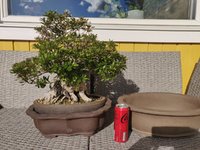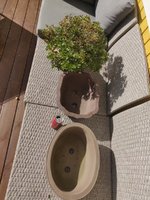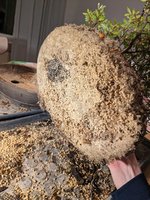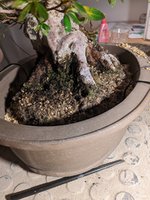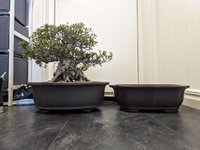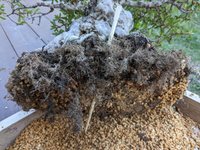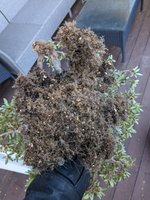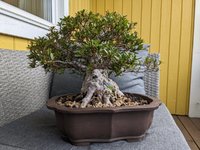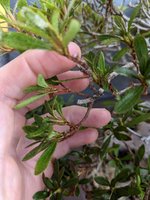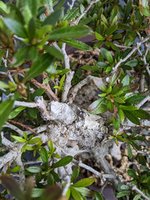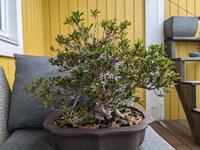Glaucus
Omono
It depends on the specific variety. Basically the different species of azaleas are forms adapted to different niches/environments.
Rhododendorn indicum specifically seems to grow exposed on the rocks near rivers.
Source: https://yakushima-asobi.com/blog/nature-information-yakushima-information/flower004/
That's from Yakushima island.
So basically:
R. indicum on rocks near rivers
R.eriocarpum (maruba satsuki) on rocks near the coast/beach
R.kiusianum on magma cliffs on volcanoes from 750m and upward
R.kaempferi valleys, hills and mountains below 750m
For R.kiusianum and R.kaempferi there are many videos on youtube showing how they occur in nature.
R.kiusianum because of the volcano hiking videos.
And R.kaempferi is pretty common, one would see them randomly on the side of the road while driving in the countryside.
Sometimes, R.kaempferi is shaded by trees. It occurs in forested areas. But those wild plants are actually huge so they are very rarely shaded by trees.
It may be that R.kiusianum is more common on the eastern face of a mountain, though. Not sure if the south face is also completely covered.
But I hear there are also flat lava fields where they also grow.
There is one paper that makes the case that R.indicum is the river-adapted version of R.kaempferi. R.indicum is an adaptation to being flooded and to resist rapidly flowing water, hence the narrower leaves.
In fact, that paper states that R.indicum in Yakushima and R.indicum in Honshu are two independent lineages where R.kaempferi adapted twice to the specific river environment, And they converged on the same 'solution'. If true, there are two distinct species of R.indicum (Yoichi et al 2018). The way things evolve in nature is extremely complicated. Things evolve in parallel, then interbreed again, over and over.
The thing though is that these azaleas grow in areas where water drains very fast and there is very little soil or compost. But this is possible because it rains a ton.
Now, Japan is a long thing country and oriented kinda North to South, plus with a lot of elevation difference. So there are going to be sub-populations adapted to each site.
Additionally, our cultivars are generally hybrids produces as a result of human breeding efforts starting in 1650 or earlier.
Rhododendorn indicum specifically seems to grow exposed on the rocks near rivers.
Source: https://yakushima-asobi.com/blog/nature-information-yakushima-information/flower004/
That's from Yakushima island.
So basically:
R. indicum on rocks near rivers
R.eriocarpum (maruba satsuki) on rocks near the coast/beach
R.kiusianum on magma cliffs on volcanoes from 750m and upward
R.kaempferi valleys, hills and mountains below 750m
For R.kiusianum and R.kaempferi there are many videos on youtube showing how they occur in nature.
R.kiusianum because of the volcano hiking videos.
And R.kaempferi is pretty common, one would see them randomly on the side of the road while driving in the countryside.
Sometimes, R.kaempferi is shaded by trees. It occurs in forested areas. But those wild plants are actually huge so they are very rarely shaded by trees.
It may be that R.kiusianum is more common on the eastern face of a mountain, though. Not sure if the south face is also completely covered.
But I hear there are also flat lava fields where they also grow.
There is one paper that makes the case that R.indicum is the river-adapted version of R.kaempferi. R.indicum is an adaptation to being flooded and to resist rapidly flowing water, hence the narrower leaves.
In fact, that paper states that R.indicum in Yakushima and R.indicum in Honshu are two independent lineages where R.kaempferi adapted twice to the specific river environment, And they converged on the same 'solution'. If true, there are two distinct species of R.indicum (Yoichi et al 2018). The way things evolve in nature is extremely complicated. Things evolve in parallel, then interbreed again, over and over.
The thing though is that these azaleas grow in areas where water drains very fast and there is very little soil or compost. But this is possible because it rains a ton.
Now, Japan is a long thing country and oriented kinda North to South, plus with a lot of elevation difference. So there are going to be sub-populations adapted to each site.
Additionally, our cultivars are generally hybrids produces as a result of human breeding efforts starting in 1650 or earlier.
Last edited:

